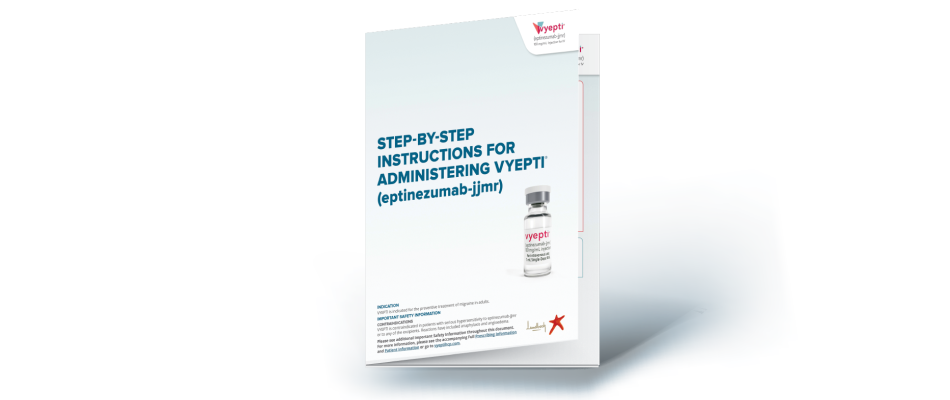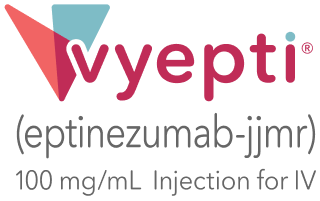VYEPTI is administered as an IV infusion every 3 months1
![]()
VYEPTI is approved for 100 mg and 300 mg doses1
100 mg is the recommended dose. Some patients may benefit from the approved 300 mg dose.
![]()
VYEPTI can be given at an infusion location or at home
Use the VYEPTI Infusion Locator to help your patients find a convenient location to get their 30-minute VYEPTI treatment.
For details and support on administering VYEPTI, download the guide and watch the short video.
Some patients may have payer-mandated or in-network infusion sites.
Chanci was compensated for her time.

Meet Stephanie, a real VYEPTI patient





